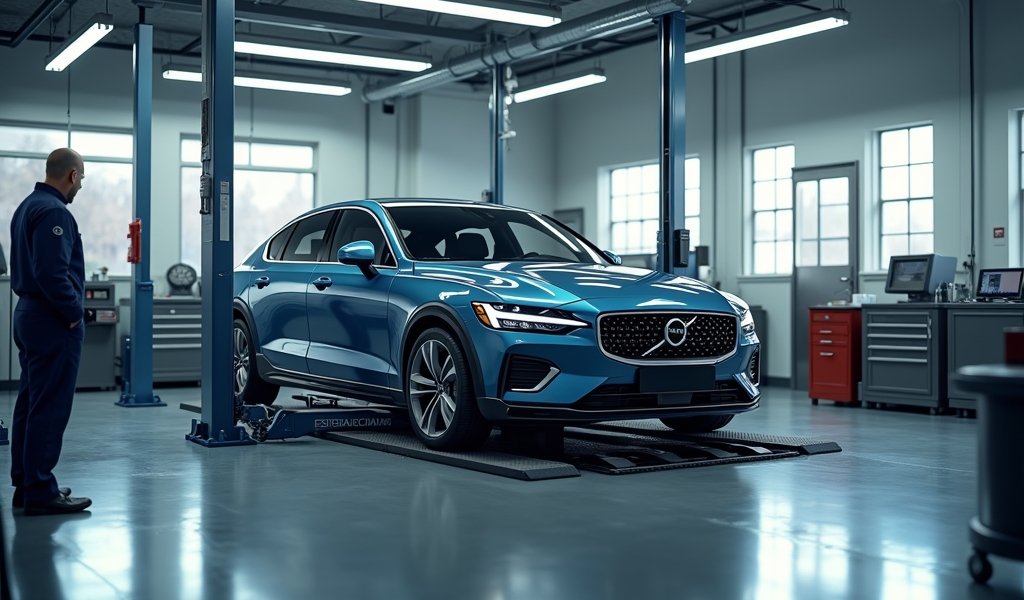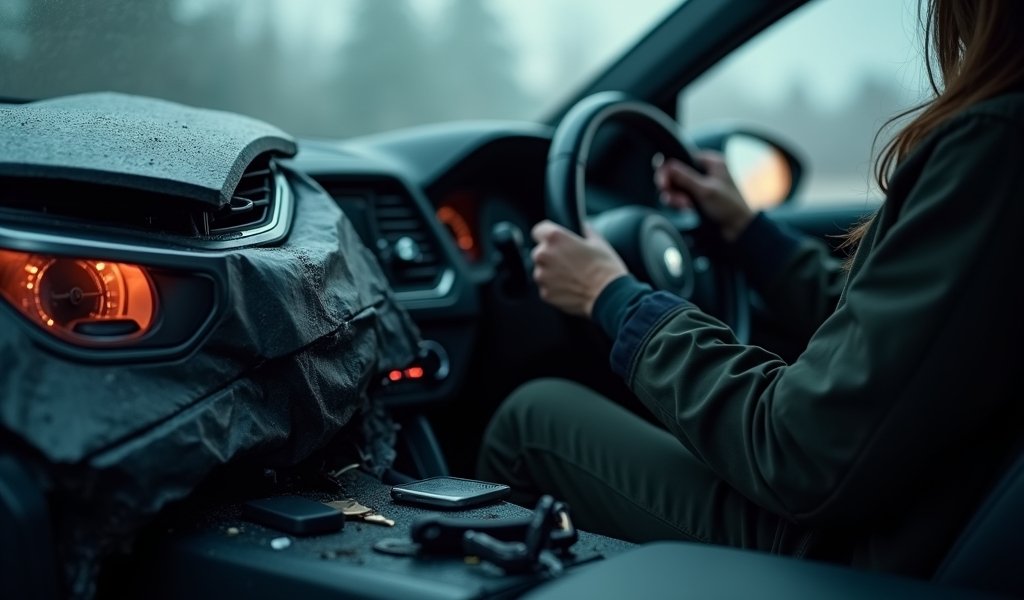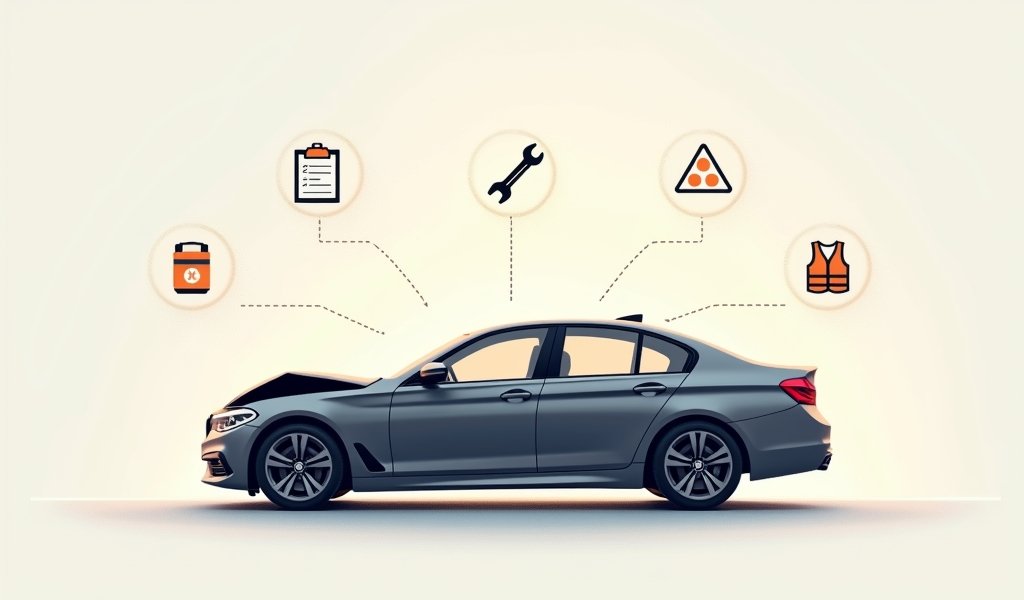Overview
This guide outlines five essential actions to take after a car accident: prioritize safety, document everything thoroughly, seek medical attention regardless of how you feel, communicate carefully with insurance companies, and understand your legal rights and options. The article emphasizes that proper preparation and immediate action following an accident can protect your health, finances, and legal standing while simplifying the recovery process.
Table of Contents
- The Crucial Moments After a Car Accident
- Safety First: Immediate Actions to Take
- Documentation Details: Capturing Everything That Matters
- Medical Attention: Why It Can’t Wait
- Insurance Communication: Navigating the Claims Process
- Legal Considerations: Protecting Your Rights
- Conclusion: Being Prepared Makes All the Difference
- Frequently Asked Questions
The Crucial Moments After a Car Accident
That sickening crunch of metal. The sudden jolt. The disorienting moments that follow a car accident can leave even the most level-headed person feeling overwhelmed. Having a reliable car accident checklist can make all the difference between a manageable situation and a prolonged nightmare. As someone who’s spent over 20 years under the hood and helping folks through these tough situations, I can tell you that what you do in those first few minutes matters—a lot.
Nobody plans to have an accident, but planning for one? That’s just smart. Whether it’s a minor fender-bender or something more serious, knowing exactly what steps to take helps protect your health, your finances, and your legal standing. Think of this comprehensive guide as your roadside companion for those moments when clarity matters most.
The five proven fixes I’m about to share have helped countless drivers navigate the aftermath of accidents with confidence. These aren’t just suggestions—they’re critical actions backed by insurance experts, legal professionals, and safety organizations nationwide. Let’s walk through them together, step by step.
Safety First: Immediate Actions to Take
When metal meets metal and your heart’s racing faster than a high-performance engine, your first priority is safety—full stop. Before worrying about insurance or whose fault it was, make sure everyone’s out of harm’s way.
Start by checking yourself. Can you move? Are you bleeding? If you’re able, check on your passengers next. Taking deep breaths helps combat the adrenaline that might be masking pain or injury. Remember, some injuries aren’t immediately obvious in the heat of the moment.
If possible, move your vehicle to a safer location. The shoulder of the road is better than blocking traffic, but only attempt this if your car is drivable and it’s safe to do so. Turn on your hazard lights immediately—they’re not just for breakdowns. Those flashing beacons alert other drivers to slow down and proceed with caution.
Here’s your immediate safety checklist:
- Check yourself and passengers for injuries
- Move to a safe location if possible and turn on hazard lights
- Call 911 even for minor accidents—you’ll need that police report
- Set up warning triangles or flares if you have them (they’re worth keeping in your trunk)
- Stay away from traffic and remain visible to other drivers
One mistake I see folks make is assuming they shouldn’t call police for minor fender-benders. Trust me on this: skipping the official report can come back to haunt you when dealing with insurance claims. Even when damage seems minimal, having that documentation is invaluable.
While waiting for help to arrive, start thinking about the next steps in your car accident checklist. The immediate danger may be over, but the process of resolving everything has just begun.

Documentation Details: Capturing Everything That Matters
Once you’ve ensured everyone’s safety, your smartphone becomes your most valuable tool. Think of yourself as a detective at a crime scene—you need to document everything while the evidence is fresh. The details you capture now could save you thousands of dollars and countless headaches down the road.
Start by exchanging information with the other driver(s). You’ll need their:
- Full name and contact information
- Driver’s license number
- License plate number
- Insurance company and policy number
- Vehicle make, model, and year
Be methodical with your photos—they tell the story when memories get fuzzy. Take pictures from multiple angles showing all vehicles involved, focusing on areas with damage as well as the overall accident scene. Don’t forget to capture skid marks, broken glass, or other debris that might help establish what happened.
Weather conditions can be crucial factors in accidents, so document those too. Was it raining? Foggy? Bright sun in your eyes? These details matter when determining fault. Proper documentation for insurance can make the difference between a claim being accepted or rejected.
Witnesses can be worth their weight in gold when accounts of the accident differ. If bystanders saw what happened, politely ask for their contact information. Their unbiased perspective might become essential if there’s any dispute about how the accident occurred.
I’ve seen too many folks rely on memory alone, only to find themselves in a “he said, she said” situation weeks later. Your documentation should be so thorough that it tells the complete story without you saying a word. Think of it as building your case from the moment of impact.
Medical Attention: Why It Can’t Wait
Here’s something I’ve learned from years in this business: the human body has a funny way of hiding injuries after an accident. That rush of adrenaline can mask pain signals, making you feel fine when you’re actually hurt. That’s why seeking medical attention belongs high on any car accident checklist.
Even if you feel perfectly fine, certain injuries—particularly those involving soft tissue, neck, or head—might not show symptoms for hours or even days. What seems like a minor headache could be something more serious. What feels like slight neck stiffness might be whiplash that could cause chronic pain if left untreated.
When the paramedics arrive, let them examine you. They’re trained to spot issues you might miss. If they suggest going to the hospital, listen to them. Your health isn’t something to gamble with, and frankly, neither is your financial future—medical documentation creates a crucial link between the accident and your injuries.
Keep track of everything related to your medical treatment:
- Names of all healthcare providers you see
- Diagnoses and recommended treatments
- Medications prescribed
- Therapy sessions attended
- Days missed from work due to injuries
This medical paper trail serves two important purposes. First, it ensures you get proper treatment for all injuries, even those that might emerge later. Second, it creates documentation that will be essential if you need to file an insurance claim for medical expenses or pursue compensation for pain and suffering.
I’ve known too many folks who declined medical attention at the scene only to wake up the next morning barely able to move. By then, connecting those symptoms to the accident becomes much harder. Don’t make that mistake—your health and your case both depend on prompt medical attention.
Insurance Communication: Navigating the Claims Process
Dealing with insurance after an accident can feel like navigating a maze blindfolded. The claims process is where many drivers get frustrated, but with the right approach, you can make it much smoother. Remember, insurance companies are in the business of managing risk—and minimizing payouts—so you need to be your own best advocate.
Notify your insurance company about the accident as soon as possible. Most policies require “prompt reporting,” and delaying could give them grounds to deny your claim. But here’s a pro tip from someone who’s been around the block: stick to the facts when making your initial report. Avoid speculating about fault or making off-the-cuff statements about what happened.
When communicating with adjusters, keep detailed notes of:
- The date and time of each conversation
- The name of each person you speak with
- What was discussed and any promises made
- Claim numbers and other reference information
Understanding your policy coverage before you need it can save tremendous headaches. Do you have collision coverage? Medical payments coverage? Uninsured motorist protection? These different types of coverage kick in under different circumstances, and knowing what protection you’ve paid for helps you advocate for yourself.
One thing many drivers don’t realize: you don’t have to accept the insurance company’s first settlement offer. In fact, initial offers are often lower than what your claim is truly worth. This is especially true when it comes to exchanging information after a wreck and ensuring all damages are properly documented.
If you’re dealing with the other driver’s insurance company, be even more cautious. Their loyalty is to their policyholder—not to you. They may ask for a recorded statement, but you’re generally not required to provide one. Getting professional advice before giving such statements can protect your interests.

Legal Considerations: Protecting Your Rights
Sometimes, despite your best efforts, the aftermath of an accident becomes complicated. Insurance companies might dispute claims, injuries could be more severe than initially thought, or fault might be contested. That’s when understanding the legal aspects of your situation becomes crucial.
Every state has different laws regarding car accidents, from fault determination to compensation limits. Some operate under “no-fault” systems while others use “comparative negligence” standards that can reduce your compensation based on your percentage of fault. Knowing which applies in your state helps set realistic expectations.
The statute of limitations—the time limit for filing legal claims—varies by state and type of claim. Miss these deadlines, and you could lose your right to seek compensation entirely, regardless of how strong your case might be. These windows can be surprisingly short in some jurisdictions, sometimes just a year from the accident date.
Consider consulting with an attorney if:
- You’ve sustained serious injuries requiring ongoing treatment
- The other driver was clearly negligent (texting, intoxicated, etc.)
- The insurance company is offering a settlement that seems low
- There are disputes about who caused the accident
- The accident involved a commercial vehicle or government entity
Many personal injury attorneys offer free initial consultations and work on contingency fees, meaning they only get paid if you receive compensation. This makes legal advice accessible even if you’re worried about costs. According to insurance industry research, people who hire attorneys often receive significantly higher settlements, even after legal fees.
Remember that anything you say or post on social media about the accident could potentially be used against you. I’ve seen countless claims undermined by casual comments or photos that contradicted injury claims. Maintaining privacy about the details of your accident and recovery is a smart legal strategy.
Conclusion: Being Prepared Makes All the Difference
Having a reliable car accident checklist isn’t about being pessimistic—it’s about being prepared. The five proven fixes we’ve covered—prioritizing safety, documenting thoroughly, seeking medical attention, navigating insurance claims, and understanding legal considerations—create a roadmap for those chaotic moments when clear thinking might be your greatest challenge.
The steps you take immediately after an accident can have long-lasting impacts on your health, finances, and legal standing. By following this comprehensive guide, you’re not just reacting to an unfortunate situation—you’re taking control of it.
Remember, every accident is different, but the principles of handling them effectively remain the same. Keep this checklist handy (maybe bookmark it on your phone or keep a printed version in your glove compartment), and you’ll be better equipped to handle whatever the road throws your way.
At Know Your Car, we’ve helped countless drivers navigate the complications that follow accidents. Our team of experienced professionals understands both the mechanical and procedural aspects of post-accident recovery. If you’re dealing with the aftermath of an accident or simply want to be better prepared, consider scheduling a consultation with our team at knowsyourcar.com. We’re here to help you get back on the road with confidence and peace of mind.
Frequently Asked Questions
Should I move my car after an accident?
Move your vehicle only if it’s creating a hazard and can be safely driven. If there are injuries or significant damage, leave vehicles in place until police arrive.
Do I really need to call the police for a minor accident?
Yes, even for minor accidents, a police report provides official documentation that insurance companies typically require. Many states legally require reporting accidents that involve injuries or damage above a certain threshold.
Can I negotiate with insurance companies after they make an offer?
Absolutely—insurance companies typically start with lower offers expecting negotiation. Document all your expenses and impacts to justify requesting a higher settlement.
How long do I have to report an accident to my insurance?
Most policies require reporting “promptly” or “as soon as practicable,” which generally means within 24-72 hours. Check your specific policy, as delayed reporting could jeopardize your claim.
What if the other driver doesn’t have insurance?
If you have uninsured motorist coverage, file a claim with your own insurance company. Without this coverage, you may need to pursue compensation directly from the at-fault driver through legal action.


Pingback: Should I Move My Car After an Accident? - knowsyourcar.com